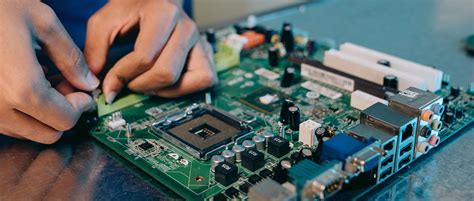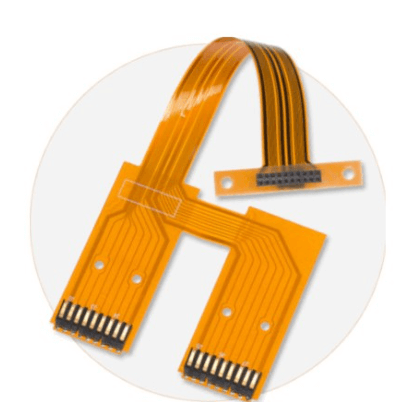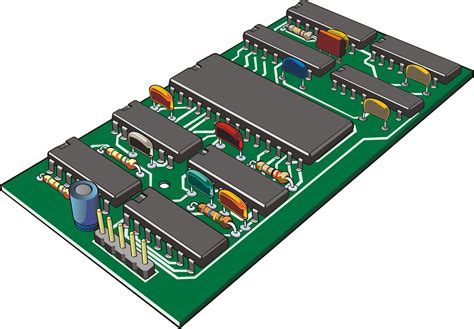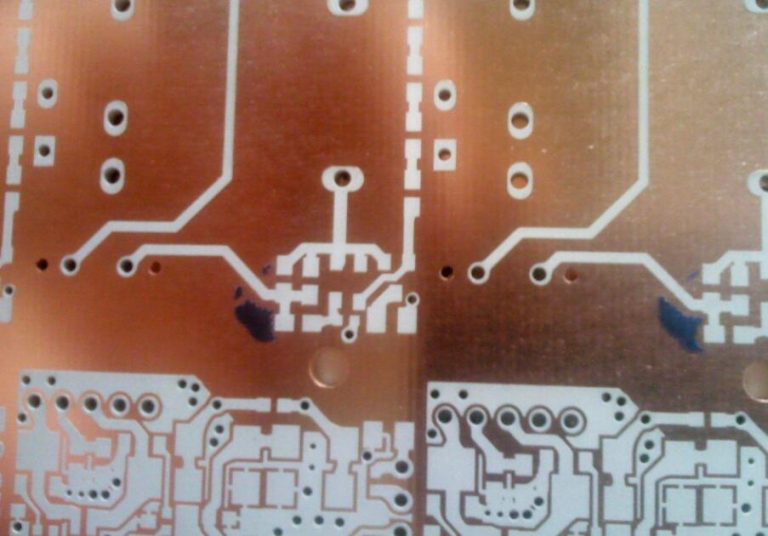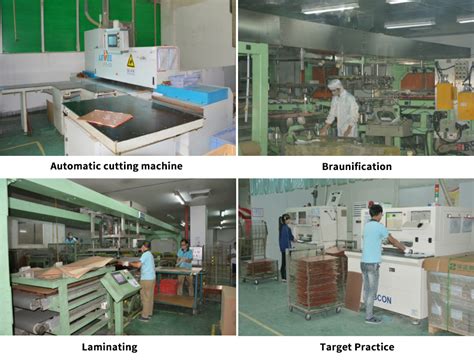PCB basic knowledge
1.PCB materials currently used by MITAC
A. Urea paperboard
Characteristics: light yellow in color, commonly used for single-sided boards, but because it is made of urea paper, it is easy to rot in a cool and humid place, so it is not commonly used now.
B. CAM-3 board
Characteristics: milky white in color, good toughness, high CTI (600V), and carbon dioxide emissions are only one-fourth of the normal. It is now more commonly used for single-sided boards.
C. FR4 fiberboard
Characteristics: made of fiber, good toughness, filaments pull each other when broken, commonly used for multi-sided boards, its thermal expansion coefficient is 13 (16ppm/c), the motherboard used by our factory is made of this board.
D. Multilayer board
Characteristics: high Tg, high heat resistance and low thermal expansion rate, low dielectric constant and dielectric loss material, mostly used for four layers or more.
E. Soft board
Features: soft material, transparent, often used for electrical connection between two boards, easy to fold. For example, the connection between LCD and computer body in laptop.
F. Others
With the popularity of multimedia digital information terminal products such as personal computers and mobile phones, PCBs are becoming lighter, thinner, shorter and smaller. Some large foreign group companies have successively developed more PCB boards, such as halogen-free, antimony-free environmentally friendly products, high heat-resistant, high Tg boards, low thermal expansion coefficient, low dielectric constant, low dielectric loss boards. Its representative products include: FR-5, Tg200 board, PEE board, PI board, CEL-475, etc. It is just that it is not popular in China now.
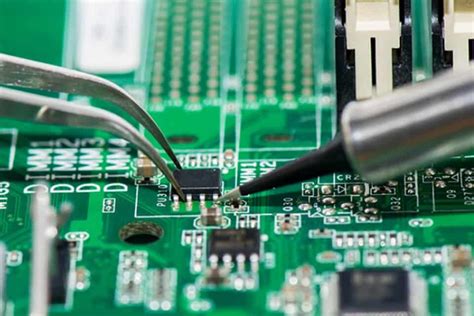
2.Current MITAC PCB-Layout process
A. RD provides SCHMATIC (EE), FAB OUTLINE (ME) product
development department provides us with schematics, and mechanical engineers provide us with peripheral information.
B. Create new parts
We call out parts from LIBRARIAN according to the schematic diagram. If there is no such part in LIBRARIAN, we need to create new parts﹒
C﹒ Parts layout
After all the parts are ready, we need to layout the parts
D﹒ ROUTING
This is our main task. After we have laid out the layout, we will do ROUTING
E﹒ Final arrangement
After ROUTING, we need to use FABLINK to finally sort out the various data we need
F﹒ Convert GERBER
Convert to the GERBER file required by the PC board manufacturer
G﹒ Data saving
After all the work is done, save the data to facilitate future modification and verification
3. Some basic terms about printed boards
On an insulating substrate, a conductive pattern made of printed circuits, printed components or a combination of the two according to a predetermined design is called a printed circuit. On an insulating substrate, a conductive pattern that provides electrical connections between components is called a printed circuit. It does not include printed components﹒
The finished board of printed circuit or printed line is called printed circuit board or printed circuit board, also known as printed board. Printed boards can be divided into two categories according to whether the substrate used is rigid or flexible: rigid printed board brush and flexible printed board. This year, rigid-flexible combined printed boards have also appeared. According to the number of layers of conductor patterns, they can be divided into single-sided, double-sided and multi-layer printed boards. The printed board whose entire outer surface of the conductor pattern is on the same plane as the substrate surface is called a flat printed board.
After electronic equipment adopts printed boards, due to the consistency of similar printed boards, manual wiring errors are avoided, and electronic components can be automatically inserted or mounted, automatically soldered, and automatically detected, ensuring the quality of electronic equipment, improving labor productivity, reducing costs, and facilitating maintenance. Printed boards have developed from single-layer to double-sided, Multilayer and flexible, and still maintain their own development trends. Due to the continuous development towards high precision, high density and high reliability, the continuous reduction in size and cost reduction, the printed board will still maintain strong vitality in the development of future electronic equipment.

4.V-1 FR-4?
FR-4 (flame-resistant laminated board) is based on “glass fiber cloth” and impregnated with liquid flame-resistant “epoxy resin” as a binder to form a film, and then laminated into boards of various thicknesses. The so-called V-1 refers to a sample of copper-free glass fiber epoxy resin substrate with a width of 0.5 inches, a length of 5 inches, and an unlimited thickness. After burning on a specific flame at an angle of 45°, the fire source is removed and the number of seconds of burning is measured, and then it is continued to burn after it is completely extinguished. After ten consecutive burn tests, the total number of seconds of burning is less than 250 seconds, which is called V-1 FR-4, and the number of seconds of burning is less than 50 seconds, which is called V-0 FR-4.
5. Brief History of PCB Development
The basic concept of printed circuits was proposed in patents at the beginning of this century. In 1947, the US Aviation Administration and the US Bureau of Standards initiated the first technical discussion on printed circuits. At that time, 26 different printed circuit manufacturing methods were listed and summarized into six categories: coating method, spraying method, chemical deposition method, vacuum evaporation method, molding method and powder pressing method. At that time, these methods failed to achieve large-scale industrial production. Until the early 1950s, the bonding problem between copper foil and laminate was solved, the performance of copper-clad laminates was stable and reliable, and large-scale industrial production was achieved.
Copper foil etching method became the mainstream of printed circuit board manufacturing technology and has been developed to this day. In the 1960s, hole metallization double-sided printing and multi-layer printed boards achieved large-scale production. In the 1970s, due to the rapid development of large-scale integrated circuits and electronic calculators, the rapid development of surface mounting technology in the 1980s and multi-chip assembly technology in the 1990s promoted the continued progress of printed circuit board production technology. A number of new materials, new equipment, and new testing instruments have emerged one after another. Printed circuit production technology has further developed in the direction of high density, thin wires, multi-layers, high reliability, low cost and automated continuous production.

6.Design process of schematic diagram
The generation of schematic diagram is generally regarded as the first step of PCB production process. It is also the concrete realization of product ideas of electronic engineering technicians. It is composed of many logic components (such as gate circuits of various ICs, resistors, capacitors, etc.) through different logic connections. When making a schematic diagram, the source of its logic components is that some CAD software contains a huge logic component library (such as TANGO PADS, etc.) and some CAD software, in addition to the logic component library, can also be added by users to create new logic components (such as Cadence, Mentor, Zuken, etc.). Users can use these logic components to realize the logic function of the product to be designed.
1 Establishing logic components
Logic components are components that provide a logic function (such as an LSOO gate, a trigger or an ASIC circuit).
1) Definition of logic component model (or component name).
2) Packaging form of logic component pins
3) Description of logic component pins
4) Definition of the appearance and symbol size of logic components
2 Functional characteristics description of logic components
To simulate the logic circuit, it is necessary to describe the functional characteristics of each logic component, such as the timing relationship of the logic component, the initial state rising edge (RISE), falling edge (FALL), delay time, drive attenuation, decay time, etc.
3 Description of the logic component library
Since there are many logic components, it is easy to cause confusion and difficult to manage if they are all built in one library. Therefore, logic components with similar functional characteristics are generally placed in one library and managed according to functional characteristics, such as A/D, D/A converter devices, CMOS devices, storage devices, TTL devices, linear devices, op amp devices, comparison devices, etc., are all placed in the same library. It can also be classified by company manufacturer, such as: MOTOROLA, NEC, INTEL, etc.
7. Functions of printed circuits in electronic devices
(1) Provide mechanical support for fixing and assembling various electronic components such as integrated circuits.
(2) Realize wiring and electrical connection or electrical insulation between various electronic components such as integrated circuits.
(3) Provide required electrical characteristics, such as characteristic impedance, etc.
(4) Provide solder mask patterns for automatic soldering, and provide identifiers and patterns for component insertion, inspection, and maintenance.
8.How will PCB manufacturing technology change to meet environmental protection requirements?
1) Reduce lead content
The method of using electroplating lead tin to make graphic plating is tending to be abolished rapidly. In the future, it will be more converted to the whole board plating (Panel Plating, also known as: board surface plating) process method. In the case of using graphic plating production method, electroplating tin will also become the mainstream. In the case of using solder, solder will be converted to lead-free materials, and there will be greater progress in this regard in the future. It is expected that this change will have little impact on the entire PCB manufacturing process.
(2) Reduce the use of formaldehyde
Formaldehyde is used as a reducing agent for electroless copper plating (also known as electroless copper plating or chemical copper deposition) in PCB production. From the perspective of environmental protection, its use will be more strictly limited in the future. In the future, the trend will be to reduce or stop using formaldehyde materials through changes in electroplating processes. Direct electroplating will become a widely used electroplating method. Re-understanding the significance of adopting this electroplating method and further improving this process are important tasks to be carried out in the future.
(3) Progress of MID
Thermoplastic resin is a polymer material that is easy to recycle. In order to meet the requirements of future environmental protection and ecological environment maintenance, thermoplastic resin will be used more in circuit components in the future. It is called molded interconnect device (MID), which will replace some PCBs with traditional manufacturing technology. MID will become a “new force” with development potential in PCB.
(4) Other materials
Solder resist materials, printed circuit board substrate materials (flame-retardant non-halogen-containing substrates) and other environmentally friendly materials will be developed and developed more and faster. This will also lead to a great change in the main materials used in the PCB manufacturing process. Therefore, in PCB manufacturing, the original process technology will be greatly impacted.
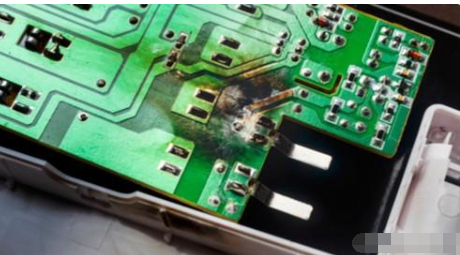
9. High-speed circuit
It is generally believed that if the frequency of a digital logic circuit reaches or exceeds 45MHZ~50MHZ, and the circuit operating at this frequency has accounted for a certain proportion of the entire electronic system (for example, 1/3), it is called a high-speed circuit.
In fact, the harmonic frequency of the signal edge is higher than the frequency of the signal itself. It is the rising and falling edges of the signal that change rapidly (or the jump of the signal) that cause the unexpected result of signal transmission. Therefore, it is usually agreed that if the line propagation delay is greater than 1/2 of the rise time of the digital signal driver, then such a signal is considered to be a high-speed signal and produces a transmission line effect. The transmission of the signal occurs at the moment when the signal state changes, such as the rise or fall time. The signal travels from the driver to the receiver for a fixed period of time. If the transmission time is less than 1/2 of the rise or fall time, the reflected signal from the receiver will reach the driver before the signal changes state. On the contrary, the reflected signal will reach the driver after the signal changes state. If the reflected signal is very strong, the superimposed waveform may change the logic state.
10.V_CUT
A method of forming a circuit board is to cut a straight line at the same position on the upper and lower sides of the board but not cut it off, so that it can be broken manually or with a jig to form a V-shaped groove on the upper and lower sides when viewed from the side of the board, so it is called V_CUT
11.Gold Fingers
It refers to the gold-plated wires on the upper panel of some circuit boards, such as network cards, which are called gold fingers because of their finger-like shape.

